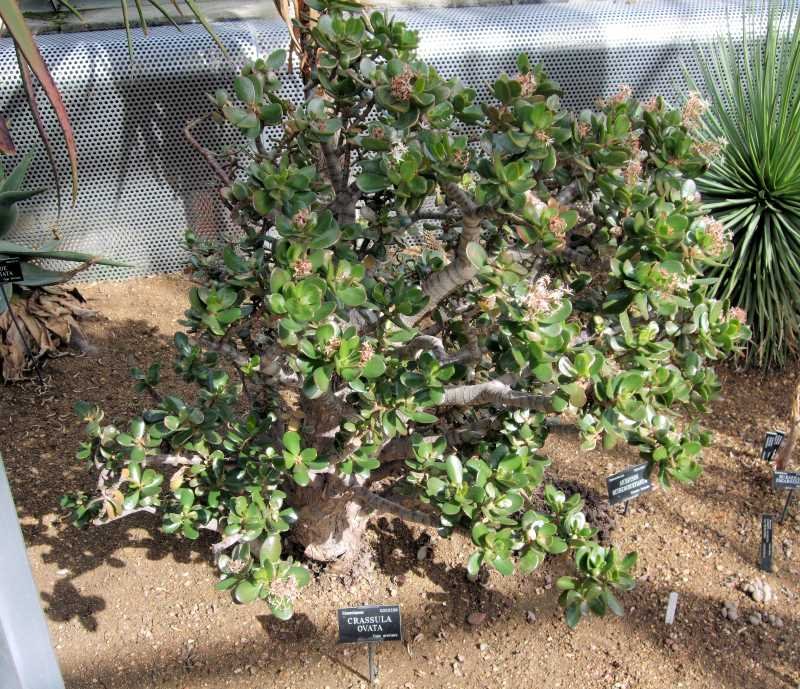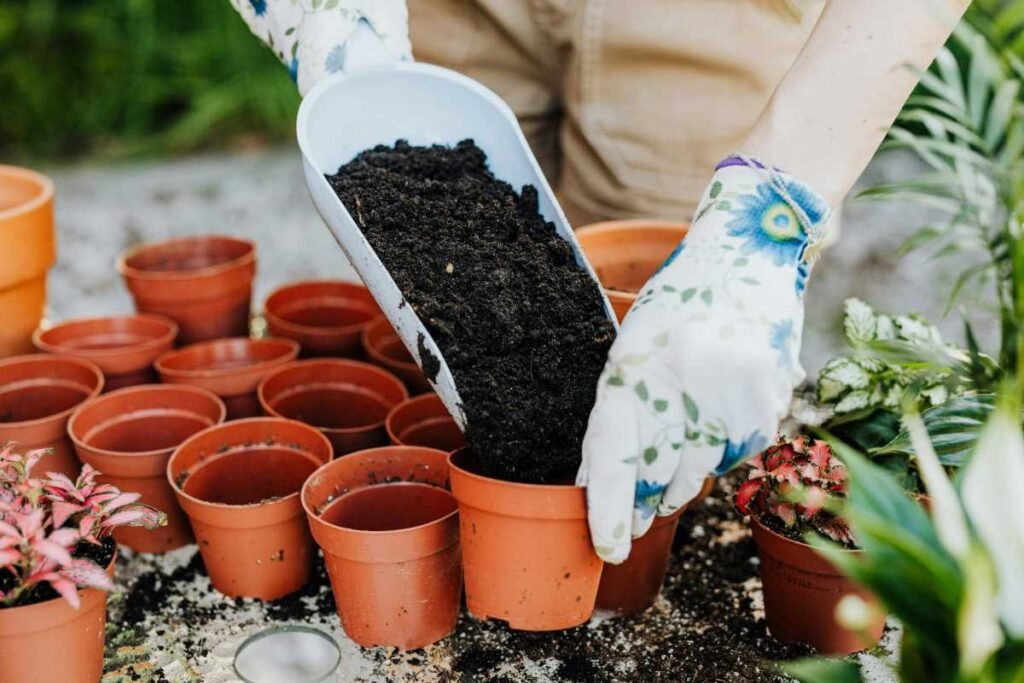Summer brings warmth, sunshine, and longer days – elements that your jade plant both loves and fears. As someone who’s nurtured these charming succulents for years, I’m excited to share my complete guide to summer jade plant care.
These resilient little trees need special attention when temperatures rise, and with the right approach, they’ll reward you with lush growth and vibrant health.
Table of Contents
Why Jade Plants Need Special Summer Care

Jade plants (Crassula ovata) hail from the hot, dry regions of South Africa. You might think this makes them perfect summer plants – and you’d be partly right! But even sun-loving succulents need protection from extreme heat and intense sunlight.
In their natural habitat, jade plants deal with dry conditions but often grow in spots with dappled light. Your jade buddy sitting on your sunny windowsill faces different challenges than its wild cousins. Summer brings longer light hours, higher temperatures, and sometimes humidity levels that these plants aren’t used to.
I learned this the hard way when I left my favorite jade on a south-facing porch during a heatwave. The scorched leaves taught me an important lesson about summer jade care!
Finding the Perfect Summer Spot
The first step in summer jade plant care is location, location, location! Where you place your plant can make all the difference between a thriving specimen and a struggling one.
Light Needs Change with Seasons
During summer, the sun is stronger and days are longer. A spot that was perfect in spring might be too intense now.
Jade plants love bright light, but direct summer sun can burn their leaves. If your jade lives on a sunny windowsill, you might need to move it back a few feet or add a sheer curtain during peak summer months.
I keep my jades near east-facing windows in summer. They get gentle morning sun but avoid the harsh afternoon rays. If you notice red tinges on leaf edges, your plant is telling you it’s getting a lot of sun – not necessarily bad, but watch for signs of sunburn like brown spots.
Outdoor Summer Living
Can jade plants go outside for summer? Yes! Mine love their summer vacation on my partly shaded patio.
If moving your jade outdoors, follow these tips:
- Start with a shady spot and slowly introduce more light over a week.
- Never place jade plants in full, direct sun right away.
- Keep them protected from heavy rain.
- Bring them back inside when night temperatures drop below 50°F (10°C).
My jades flourish with this indoor-outdoor lifestyle. The gentle breeze helps them grow stronger stems, and the natural light cycle promotes better growth. Just remember – a gradual transition prevents shock!
Summer Watering: Finding the Balance

Watering jade plants in summer requires a delicate balance. These succulents store water in their leaves and stems, making them drought-resistant. But that doesn’t mean they never need a drink!
The Right Watering Schedule
Summer heat increases evaporation, so your jade might need more frequent watering than in cooler months. However, overwatering remains the number one killer of jade plants.
I follow this simple rule: check the soil, not the calendar. Stick your finger about an inch into the soil. If it feels completely dry, it’s watering time. If you detect any moisture, wait a few more days.
For my indoor jades in summer, this usually means watering every 7-10 days. Outdoor jades might need water every 5-7 days, depending on heat and humidity. Your schedule will vary based on your specific conditions.
Watering Technique Matters
How you water is just as important as when you water. Here’s my tried-and-true method:
- Water thoroughly until it flows from the drainage holes.
- Empty the saucer – never let your jade sit in water.
- Allow the soil to dry completely before the next watering.
I water my jades early in the morning during summer. This gives excess moisture time to evaporate before cooler evening temperatures set in, reducing the risk of rot.
Humidity Considerations
Jade plants prefer dry air, making most indoor environments perfect. But summer can bring humidity in many regions.
If you live in a humid climate, you might need to:
- Water less frequently
- Ensure excellent air circulation around your plant
- Use a fan to move air on particularly sticky days
I live in a place with humid summers, so I make sure my jades have plenty of space between them and other plants. This prevents the humid microclimate that can lead to fungal issues.
Summer Soil and Container Tips

Summer heat affects your jade’s soil and pot too! The right combination helps maintain good moisture balance and root health.
Perfect Soil Mix for Summer
Jade plants always need well-draining soil, but this becomes even more critical in summer when watering needs change.
My summer jade soil recipe:
- 2 parts good quality cactus/succulent mix
- 1 part perlite or pumice
- 1 part coarse sand
This mix drains quickly but holds just enough moisture for healthy roots. The added perlite and sand create air pockets that help roots breathe even in summer heat.
If you notice water pooling on the soil surface or taking too long to drain, your mix is too dense for summer conditions. Add more perlite to improve drainage.
Container Considerations
The pot you choose affects how your jade handles summer conditions:
Terracotta pots are my favorite for summer jade care. They’re porous and help excess moisture evaporate. On hot days, this natural cooling mechanism can protect roots from overheating.
Plastic pots retain moisture longer, which might be good if you tend to forget watering but can be risky during hot, humid periods.
Container size matters too. A pot that’s too large holds excess moisture around roots. For summer, I sometimes move jades to slightly smaller pots to help control soil moisture.
Always ensure your pot has drainage holes – this is non-negotiable for jade plants, especially in summer!
Fertilizing During the Growing Season

Summer is prime growing time for jade plants. With the right nutrients, your plant can put out impressive new growth during these months.
Summer Feeding Schedule
Jade plants aren’t heavy feeders, but they appreciate some nutrition during active growth. Here’s my approach:
- Feed monthly from late spring through mid-summer
- Stop fertilizing by late summer to prepare for fall
- Use fertilizer at half the recommended strength
I prefer a balanced liquid fertilizer diluted to half strength. Apply it to slightly damp soil to prevent root burn. Some gardeners swear by succulent-specific fertilizers, but I’ve had great results with standard houseplant food as long as I dilute it properly.
Signs of Fertilizer Problems
Too much fertilizer can harm your jade plant. Watch for these warning signs:
Overfertilizing shows up as salt buildup on soil, leaf burn, or leggy growth. If you see white crust on your soil, flush the pot thoroughly with clean water.
Underfertilizing is less common but might show as slow growth or pale leaves during the growing season.
My jade plants went years with minimal fertilizer and survived fine. But when I started a proper summer feeding routine, the difference in growth and leaf plumpness was remarkable!
Managing Temperature Extremes
While jade plants love warmth, extreme summer heat can stress them. Understanding how to manage temperature is key to summer success.
Ideal Summer Temperature Range
Jade plants thrive in temperatures between 65°F and 85°F (18°C to 29°C). They can tolerate higher temperatures, but may need extra care when the mercury climbs above 90°F (32°C).
If your home gets very hot, consider these cooling strategies:
- Move plants away from windows during peak heat
- Use sheer curtains to filter intense sunlight
- Ensure good air circulation with a gentle fan
- Avoid placing jades near air conditioning vents
I once left a jade plant in my car while running errands on a hot day. Even though it was only for an hour, the greenhouse effect nearly killed it! Now I’m careful never to expose my plants to extreme heat.
Night Temperature Drops
Summer brings another interesting challenge – the difference between day and night temperatures. Jade plants actually benefit from this natural cycle, as long as nights don’t drop below 50°F (10°C).
This temperature variation helps promote the tight, compact growth that makes jade plants so attractive. If your jade spends summer outdoors, the natural temperature cycle will help it develop a stronger structure.
Summer Pruning and Shaping
Summer is the perfect time to shape your jade plant and encourage fuller growth. With longer days and active growth, your plant will quickly recover from pruning.
When and How to Prune in Summer
I do most of my jade pruning in early to mid-summer. This gives plants plenty of time to heal before fall arrives.
Simple pruning steps:
- Use clean, sharp scissors or pruning shears
- Cut stems just above a leaf node (where leaves emerge)
- Remove any damaged or leggy growth
- Don’t take more than 1/3 of the plant at once
Pruning encourages branching, creating a fuller, more tree-like appearance. After pruning my leggy jade last summer, it developed three new branches from the cut point!
Leaf Removal for Better Shape
Sometimes removing individual leaves helps balance your jade’s appearance. Gently twist leaves off to reveal the stem beneath. This technique works well for creating a more tree-like look.
Let pruned stems and leaves dry for a few days – they might be useful for propagation later!
Dealing with Summer Jade Plant Problems
Summer brings specific challenges for jade plants. Knowing how to identify and address these issues quickly can save your precious plant.
Sunburn and Heat Stress
Sunburn appears as brown or whitish patches on leaves exposed to intense sun. Once damaged, these areas won’t recover, but you can prevent further damage:
- Move the plant to a less sunny location
- Add filtering curtains if moving isn’t possible
- Provide afternoon shade during the hottest part of the day
I’ve revived many sunburned jades. While the damaged leaves don’t heal, new growth will come in healthy if conditions improve.
Summer Pest Problems
Warm weather brings increased pest activity. The most common summer jade pests include:
Mealybugs look like tiny cotton balls in leaf joints and stems. Treat by wiping with alcohol on a cotton swab.
Spider mites thrive in hot, dry conditions. Look for fine webbing and treat with insecticidal soap.
Scale insects appear as small bumps on stems and leaves. Remove them manually with a soft toothbrush.
I check my jades weekly during summer, examining the undersides of leaves and stem joints where pests hide. Early detection makes treatment much easier!
Root Rot Concerns
Summer’s combination of heat and potential overwatering creates perfect conditions for root rot. This deadly problem starts underground where you can’t see it.
Signs of summer root rot include:
- Leaves turning yellow or translucent
- Stems becoming soft at the base
- Musty smell from the soil
- Plant becoming unstable in its pot
If you catch root rot early, repot immediately in fresh, dry soil after trimming away affected roots. Let the plant dry out completely before watering again.
Special Summer Care for Different Jade Varieties
Not all jade plants are the same! Different varieties have special summer care needs.
Traditional Jade (Crassula ovata)
The classic jade plant is fairly resilient in summer but can sunburn if moved too quickly into bright conditions.
Hobbit or Gollum Jade (Crassula ovata ‘Gollum’)
These quirky jades with tubular leaves actually handle heat better than standard varieties. They can take more direct sun if acclimated gradually.
Variegated Jades
Plants with cream or white variegation burn more easily in summer sun. They need more protection than solid green varieties. My variegated jade gets morning sun only, and even then, I keep it a few feet back from the window.
Miniature Jade Varieties
Smaller jades dry out faster in summer heat. Check their soil more frequently, as they might need water more often than their larger cousins.
Creating a Summer Care Routine
Consistency helps jade plants thrive through summer. A simple care routine ensures you don’t miss important care tasks.
My weekly summer jade routine looks like this:
Monday: Check soil moisture in all plants, water if needed Wednesday: Inspect for pests and remove dust from leaves with a soft brush Friday: Second moisture check for outdoor specimens Monthly: Apply diluted fertilizer (until mid-summer)
This schedule works with my lifestyle and ensures I never neglect my plants for too long. Find a routine that fits your schedule!
Preparing for Fall as Summer Ends
As summer wanes, help your jade transition to fall conditions. Start reducing water and fertilizer about a month before temperatures begin dropping in your area.
If your jade spent summer outdoors, begin the indoor transition when night temperatures approach 50°F (10°C). Start by moving it to a sheltered outdoor location, then to a cool indoor spot, and finally to its winter home.
This gradual transition prevents shock and leaf drop. My jades hardly notice the seasonal change when I follow this method.
Enjoying Your Summer Jade Success
The reward for proper summer care is a jade plant that enters fall and winter in peak condition. You’ll notice:
- Compact, strong growth
- Vibrant color
- Thick, plump leaves
- Strong stems that support the plant well
My oldest jade has survived 15 summers under my care. Each year, it grows more tree-like and impressive. With the summer care tips I’ve shared, your jade can enjoy the same success!
Remember that jade plants are individuals. Pay attention to how your specific plant responds to your care and environment. The jade that thrives on my east window might prefer a different spot in your home.
Conclusion
Summer jade plant care is a balance of providing enough light and water while protecting from extremes. These resilient plants forgive mistakes but truly thrive with attentive care tailored to summer conditions.
By adjusting your jade’s location, watering schedule, and other care practices for summer, you’ll help it not just survive but flourish during the growing season. The effort pays off with stronger, healthier plants that can live for decades.
What summer jade care tips have worked in your home? Each growing environment is unique, and sharing experiences helps our whole plant community! Feel free to comment below with your own summer jade success stories.
Until next time, happy growing!

My name is Shahriar Robin, and I’m the creator of JadePlants.org. Growing up in a village, I developed a deep connection with nature from a young age. Plants and gardening have always been a part of my life, and jade plants, with their resilience and elegance, have held a special place in my heart. Over the years, I’ve learned so much about these fascinating plants, and I created this site to share that knowledge with you—completely free of charge.
